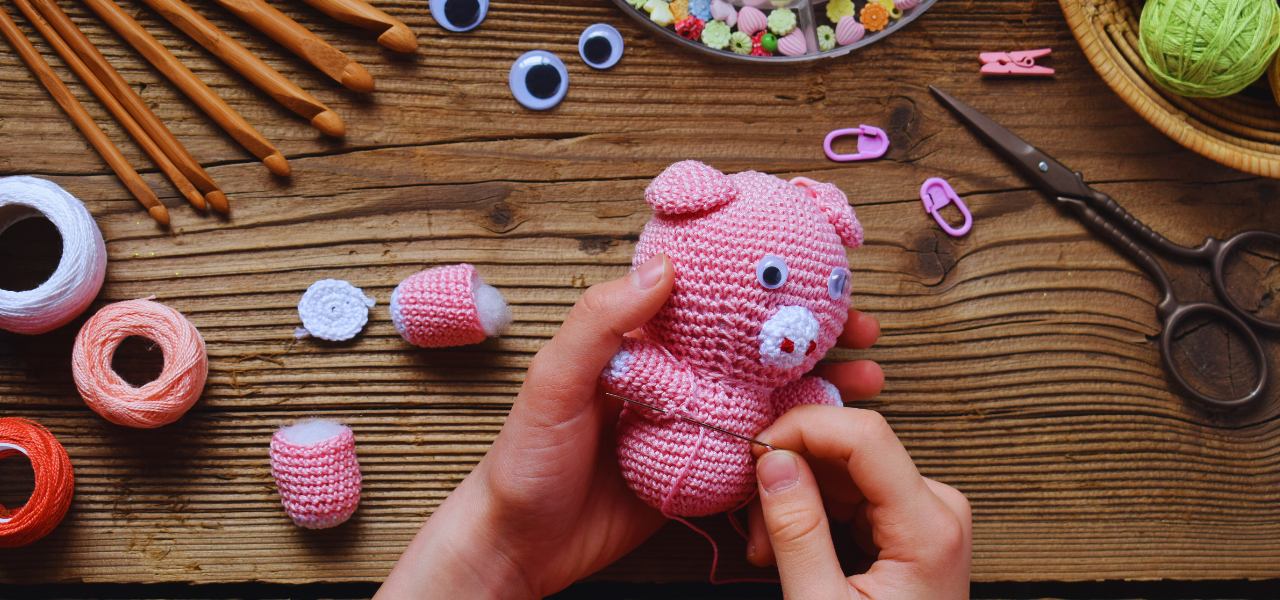Craft Activities: Knitting for Blind Children
This material is suitable for children of all ages and adults. Hand knitting is a form of craft that can be practiced by both visually impaired children and adults. Physical limitations should not be a barrier to self-discovery. Crafting is not only a source of inspiration; activities like embroidery, knitting, and other handicrafts train memory and develop fine motor skills. Engaging in a beloved craft fills life with vibrant colors and boosts self-esteem. Crafting allows for self-expression. Many children find it difficult to express emotions through words, and they often make things not for themselves but to bring joy to others. Giving a handmade knitted toy, for instance, can instantly create a good mood.
Knitting with fingers can be done even if a child has never tried crafting before. A bit of knitting history: an ancient form of handicraft, knitting was once exclusively a men’s activity. The first knitting guild was founded in Paris in 1521, and women were not admitted. Women were trusted to spin wool but not to knit. Over time, women mastered the skill, and now a male knitting master is considered unique.

Finger Knitting
Finger knitting involves creating stitches without needles or hooks. Many have seen large-knit items where stitches are evenly spaced, producing a perfectly even piece since there is no tension created—each stitch simply loops through the next. Special yarns made with ready-made loops are perfect for this technique, which involves knitting each loop by hand. The process is straightforward: insert one loop into the next using only your fingers. You knit only on the front side, first left to right, then right to left, without needing to turn the work for the next row. The size of the loops affects the look of the piece; the larger the loops, the more airy the item appears.
With looped yarn, you can knit a soft, stylish throw or a cozy, voluminous blanket. Square or rectangular items work best for hand-knitting, and working with fluffy micro-polyester yarn is a joy. This yarn is light, soft, and pleasant to the touch, making the finished item warm and lightweight.
Benefits of Knitting for Motor Skills
The knotting technique without needles or hooks is not difficult, allowing one to create unique items using only four fingers. All fingers and the entire hand are engaged in the process, which develops fine motor skills. Research shows a direct correlation between fine motor skill development and language proficiency. Training finger and hand movements significantly stimulates a child’s language development. The act of knitting also calms the child’s nervous system, and completing an item brings satisfaction. This technique is suitable for children not only of school age but as young as five or six years old. The results come quickly, keeping children interested throughout the process.
Today, there is a wide variety of yarn available, from coarse to soft, in balls or skeins, processed or raw. Each type of yarn has its own pros and cons. The most popular yarn for blankets is merino wool, which produces soft, stylish blankets and scarves. Merino wool, sourced from a specific breed of sheep, creates items that are warm, non-itchy, and good for the skin, with a unique chunky knit style. One downside of looped yarn is that it’s not suitable for every type of project.
Check out our blog geometric puzzles for children and adults to explore exciting activities that challenge the mind and hands alike!
Making a Yarn Doll
You can use yarn of any color to make a doll by hand, which can become a heartfelt gift for loved ones.
